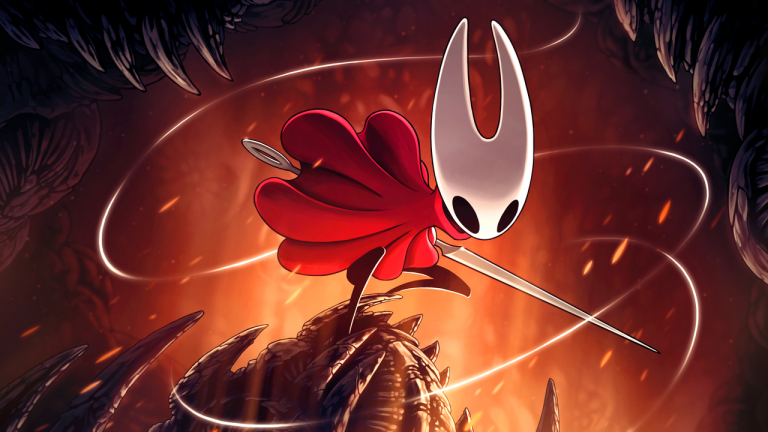Struggling to turn your ideas into engaging content? ChatGPT prompts can revolutionize the way you write. With just the right guidance, these prompts help you refine your tone, spark creativity, and structure content like a pro.
The secret lies in being specific—clear instructions lead to tailored, impactful responses that save time and elevate your writing. Avoid common pitfalls like vague prompts or lack of context, and unlock a new level of productivity.
From brainstorming fresh ideas to perfecting grammar, learn how to harness ChatGPT’s full potential to streamline your process and craft compelling content effortlessly.
Key Takeaways
ChatGPT prompts help you clarify your writing objectives.
Being specific with prompts ensures more relevant and tailored responses.
Prompts can improve your tone to suit different audiences.
Experimenting with prompts can boost creativity and skill development.
Always review AI-generated outputs for accuracy and a personal touch.
Understanding ChatGPT Writing Prompts
What Are ChatGPT Writing Prompts?
ChatGPT writing prompts are targeted instructions or questions designed to guide the AI in creating content. These prompts act as a framework, giving the AI clear directions to follow. Without precise prompts, the AI’s responses can become generic or miss the mark entirely.
Why Specificity Matters
Through experience, I’ve learned that specificity is essential when using ChatGPT. Here’s why:
Clarity: Specific prompts lead to clearer, more focused responses.
Relevance: Detailed instructions ensure the AI addresses key aspects of your topic.
Efficiency: The more precise your prompt, the less time you spend revising the output.
Common Pitfalls to Avoid
When using ChatGPT, it’s easy to fall into certain traps, such as:
Vague Prompts: General questions often result in unhelpful or overly broad answers.
Lack of Context: Without sufficient background information, the AI may misinterpret your needs.
Ignoring Feedback: If the initial response isn’t satisfactory, revising the prompt instead of abandoning it can lead to better results.
By understanding the role of prompts, you can improve your writing process and achieve more consistent outcomes. In the age of AI-enhanced SEO, optimizing for user intent and conversational language is vital for boosting engagement and visibility.
Crafting Effective Prompts for Different Writing Styles
Formal Writing
Formal writing demands a specific tone and structure. Here’s how to tailor your prompts:
Use precise language.
Avoid informal expressions or slang.
Emphasize logical reasoning and factual details.
Example: Instead of “Can you help me write a report?” try, “Provide a structured outline for a formal report on renewable energy policies.”
Creative Writing
Creative writing thrives on imagination. Effective prompts can:
Spark character development.
Suggest unique plot twists or settings.
Explore varied narrative styles.
Example: “Suggest five unique settings for a fantasy adventure.”
Technical Writing
Technical writing needs accuracy and clarity. Adapt your prompts by:
Defining the audience’s knowledge level.
Including specific technical terminology.
Asking for relevant examples.
Example: “Explain the basics of blockchain technology for beginners with simple analogies.”
Adjusting prompts based on the writing style ensures your work resonates with the intended audience. Specificity is key to achieving optimal results.
Enhancing Tone with ChatGPT Prompts
Adjusting Tone for Audience Engagement
The tone you choose can transform how your message is received. Here are tips to refine your tone:
Understand your audience: Are they professionals, students, or casual readers?
Adapt your language: Formal for business, conversational for casual content.
Consider cultural nuances: Tailor your tone to align with cultural expectations.
Examples of Tone Refinement Prompts
“Make this text sound more professional.”
“Rewrite this paragraph in a friendly tone.”
“Turn this email into a persuasive message.”
Avoiding Common Mistakes
Be mindful of:
Excessive Formality: This can distance your audience.
Overusing Slang: It may confuse or alienate some readers.
Inconsistencies: Ensure the tone remains uniform throughout your piece.
Finding the right tone is crucial for effective communication. With the help of ChatGPT prompts, you can refine your message to connect with readers more effectively.
Boosting Creativity with ChatGPT Prompts
Generating Fresh Ideas
When inspiration runs dry, ChatGPT can help spark creativity. Prompts like “Suggest five story ideas about friendship” encourage fresh perspectives. Tips for generating ideas:
Be specific: Provide details to narrow the focus.
Ask for variations: Request alternate takes on ideas you like.
Use themes: Choose prompts centered on specific genres or topics.
Overcoming Writer’s Block
Writer’s block is frustrating, but ChatGPT can help. For example: “I’m stuck on a scene where a character faces a moral dilemma. Can you help?”
Strategies include:
Describing your challenge.
Requesting relevant prompts.
Taking breaks to reset your perspective.
Brainstorming with ChatGPT
ChatGPT serves as a brainstorming partner. For instance: “Let’s brainstorm blog post ideas about sustainable living.”
Maximize sessions by:
Defining your goal.
Encouraging back-and-forth dialogue.
Keeping the process casual to foster creativity.
ChatGPT can act as an idea generator, helping you overcome obstacles and enhance your creative flow.
Improving Content Structure with ChatGPT Prompts
Organizing Ideas Logically
Start by outlining your main points. Steps include:
Define your central topic.
Break it into subtopics.
Arrange them in a logical sequence.
Example: “Help me outline an article about fitness trends for 2024.”
Creating Outlines and Drafts
Prompts like “Draft an introduction for an article about climate change” can streamline your workflow.
Ensuring Coherence
Smooth transitions are key. Prompts such as “Suggest a better transition between these paragraphs” can improve flow.
With structured prompts, your content will be more organized, cohesive, and impactful.
RELATED:
How I Transformed ChatGPT and YouTube into a $297 Daily Income Stream in Only 3-4 Hours Weekly
Optimizing Grammar and Style with ChatGPT
Proofreading and Editing Prompts
Use prompts like:
“Check this text for grammar errors.”
“Suggest improvements for this paragraph.”
Style Consistency
Decide on a tone and maintain it throughout. Example: “Make this text sound formal.”
Avoiding Common Grammar Mistakes
Watch out for errors like:
Confusing “its” and “it’s.”
Misusing “their,” “there,” and “they’re.”
ChatGPT can help refine your work and ensure it’s polished.
Leveraging ChatGPT for SEO Content
Incorporating Keywords
Research keywords and use them naturally in titles, headings, and body text.
Writing Meta Descriptions
Craft engaging meta descriptions by:
Keeping them under 160 characters.
Including keywords.
Making them compelling.
Enhancing Readability
Use short paragraphs, subheadings, and bullet points to improve engagement.
By following these steps, you can create SEO-friendly content that ranks well and resonates with readers.
Best Practices for Using ChatGPT Prompts
Providing Context
Always explain what you need clearly. Example: “Write a short story about a dog exploring a forest.”
Feeding Reference Material
Include examples to guide the AI. For instance, share a style sample for tone alignment.
Asking for Refinements
If the output isn’t perfect, ask for more examples or alternative approaches.
Data Privacy Considerations
Avoid sharing sensitive or personal information.
Be cautious with confidential details.
By following these practices, you’ll get the most out of ChatGPT while protecting your data.
Frequently Asked Questions
What Are ChatGPT Writing Prompts?
They are detailed instructions or queries provided to the AI to generate specific and relevant content tailored to your needs.
Why Be Specific?
Specificity allows the AI to better understand your requirements, ensuring high-quality, accurate, and relevant outputs.
Common Mistakes?
Using vague prompts, providing insufficient context, or sharing sensitive data can lead to unhelpful or inaccurate results.
How to Adjust Tone?
Clearly mention the tone you want, like professional, conversational, casual, or persuasive, to match your target audience.
Stuck for Ideas?
You can use ChatGPT to brainstorm fresh topics, generate creative ideas, or refine existing concepts for your content.
How to Improve Grammar?
Ask ChatGPT for proofreading, editing, or rewriting suggestions to enhance grammar, structure, and readability.
Types of Content?
ChatGPT can create various content, including blog posts, social media captions, emails, marketing materials, and more.
Is Data Safe?
To maintain security, avoid inputting personal, sensitive, or confidential information when using ChatGPT for content creation.
How to Create Engaging Prompts?
Focus on clarity, provide context, and include specific keywords or themes to make prompts more actionable.
Can ChatGPT Help with Research?
Yes, it can summarize, analyze, or provide insights on topics to support your research and content creation efforts.
By applying these strategies, you can harness the full potential of ChatGPT prompts to elevate your content and streamline your writing process.
Tired of 9-5 Grind? This Program Could Be Turning Point For Your Financial FREEDOM.
This AI side hustle is specially curated for part-time hustlers and full-time entrepreneurs – you literally need PINTEREST + Canva + ChatGPT to make an extra $5K to $10K monthly with 4-6 hours of weekly work. It’s the most powerful system that’s working right now. This program comes with 3-months of 1:1 Support so there is almost 0.034% chances of failure! START YOUR JOURNEY NOW!












